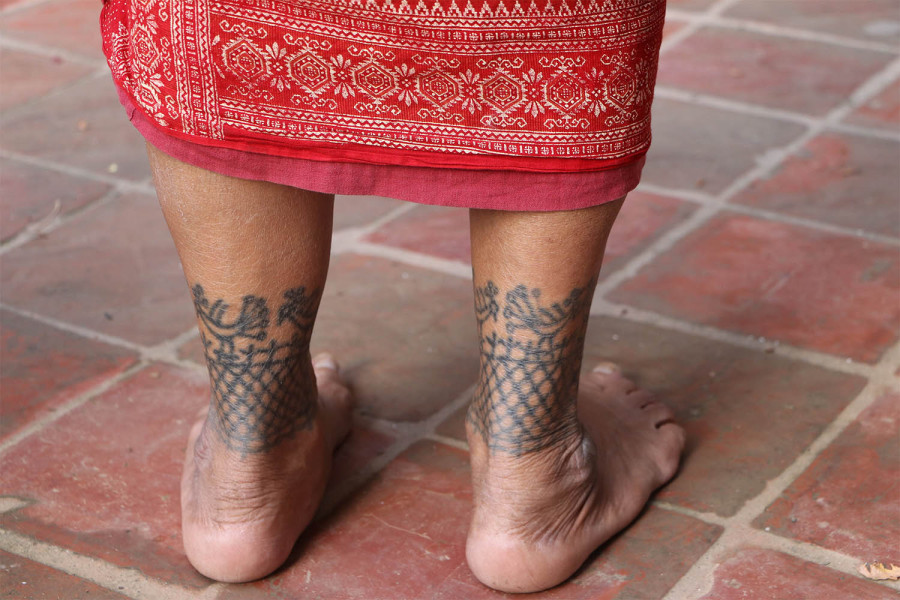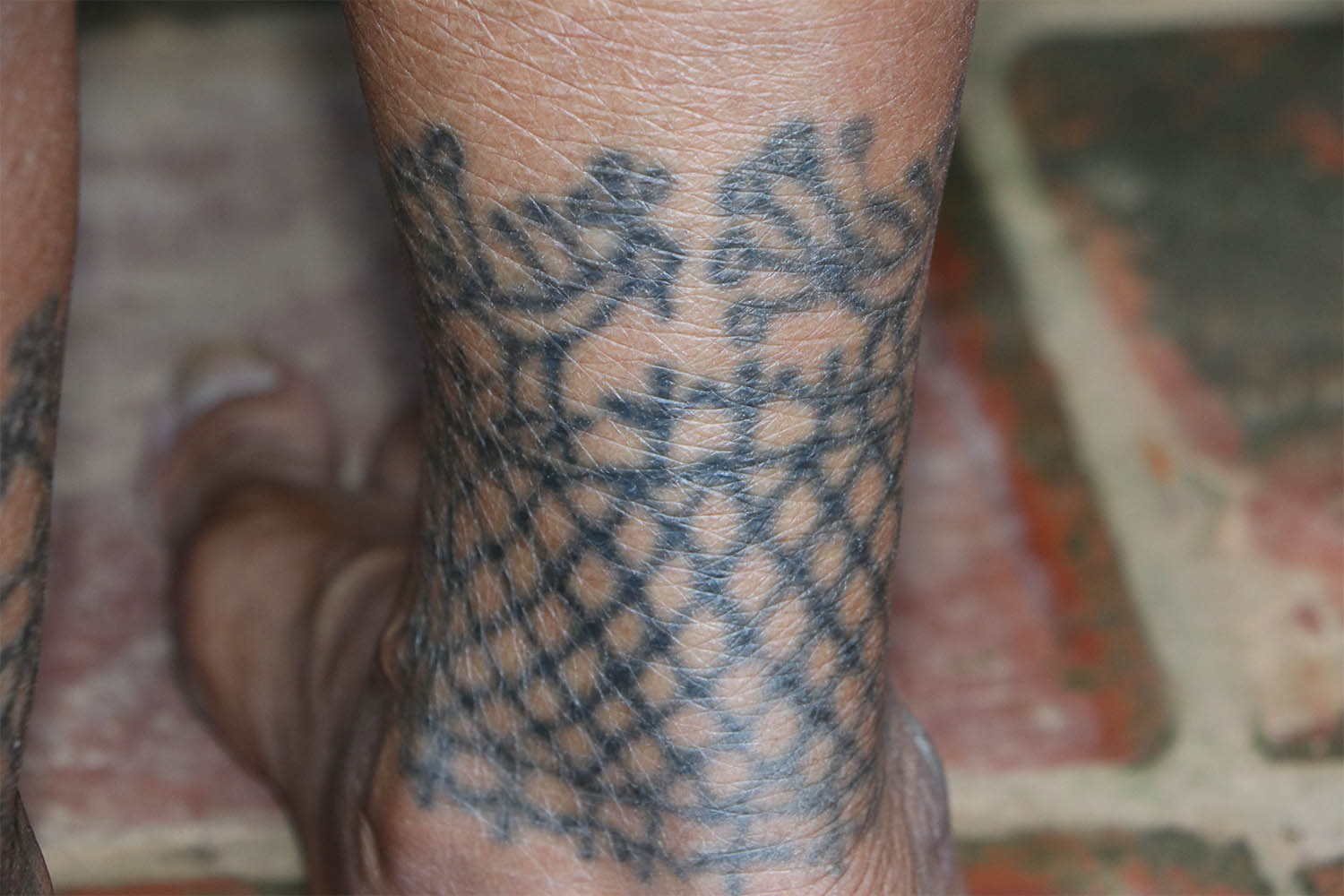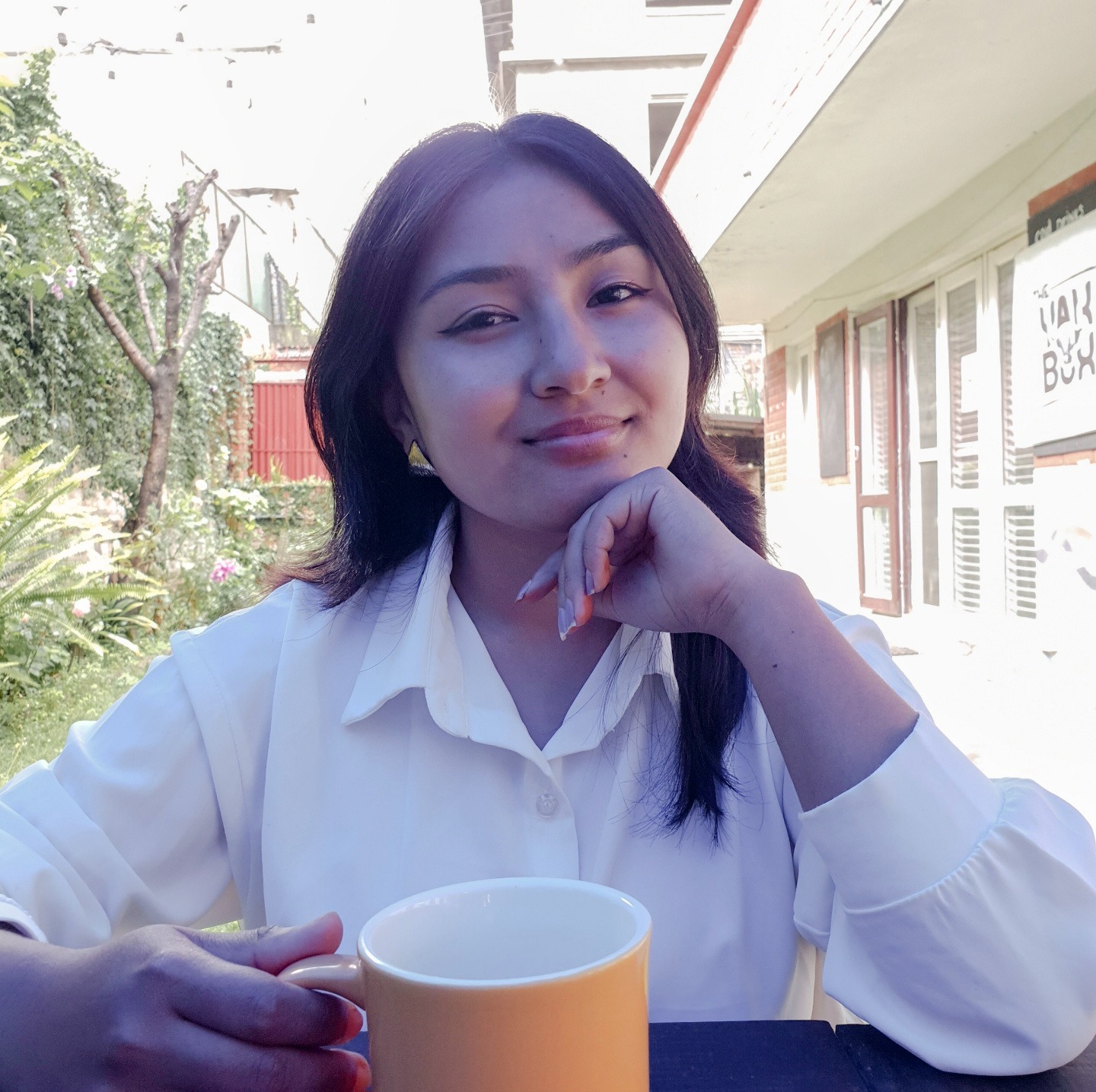Culture & Lifestyle
Ink, identity and afterlife
Traditional Newa tattoos, an important part of Newa identity, became popular in the early 1900s and are still in vogue today as young tattoo artists mix traditional styles with modern motifs.
Timila Maharjan
Tattooing on the hands and legs has been a tradition passed down through generations. Even today, many elderly people, especially women, still bear these traditional tattoos. Sanjay Khadgi, a tattoo artist and owner of Swastik Tattoo Studio, who also wrote a thesis on the ‘History of Tattoos and Their Status in Nepal’, shared that Chiri Bhai Nepali was among the first to introduce Newa traditional tattoos in the 1930s.
He fled to Calcutta during the Rana regime’s autocratic rule, where he learned the art of tattooing. After returning to Nepal, he brought back a tattoo machine and opened a shop in Te Bahal, Kathmandu, which became popular at the time. In 2013, during his research, Khadgi met Leela Nepali, Chiri Bhai Nepali’s daughter, and gathered detailed information about him.
Khadgi explains, “Chiri Bhai made his ink by mixing ash, ghee, and water. He had a short life, and after his death, his son-in-law, Nirmal Nepali, carried on his legacy. Unfortunately, there is no documentation of Chiri Bhai, and few people know about him. Even his photograph is lost to history.”
Traditional Newa tattoos are known for their unique patterns and designs, with women being the primary bearers. The hands are typically adorned with images of gods and goddesses, while the legs display latticed window designs. These tattoos were popular among the Jyapu people of the Newa community.
Raju Bajracharya, tattoo artist and owner of Yala Ink Tattoo, observes that some people only have tattoos on one leg because they couldn’t bear the pain to finish the other. He explains, “The latticed window design on the legs may have been chosen for its aesthetic appeal. It could also represent protection, as one can see everything inside a latticed window, but nothing from the outside.”
Khadgi explains, “The reason for tattooing gods and goddesses stems from religious beliefs. Even today, people continue to tattoo religious figures.”

In Nepal Bhasa, tattoos are called La Choyegu; La means flesh, and choyegu means writing, translating to ‘writing on the flesh’. These tattoos are thought to help people in the afterlife, where they can sell their tattooed flesh during difficult times and reach heaven. The belief is that, upon death, a person takes nothing with them except their tattoos. In addition to their spiritual significance, tattoos were created for beauty and appeal.
Khadgi explains, “This belief isn’t unique to Nepal; it’s also found in other countries.” Tattoos were often used to identify specific ethnic groups, such as the Tharu, who also have traditional tattoos. Additionally, Khadgi points out that tattoos served a dual purpose as a form of acupuncture, believed to relieve pain. People thought tattooing could cure ailments and discomfort. During his thesis research, Khadgi met Chiri Bhai’s daughter, who recalled many people visiting her father’s shop to get tattoos for pain relief.
These tattoos were mostly popular among women. Getting inked during jatras (festivals) and melas (carnivals) like Rato Machindra and Indra Jatra in the Kathmandu valley was popular during the old days. The concept of reincarnation is also linked with tattoos. Various religious texts suggest that a reincarnated individual will bear a sign of their previous life or divinity; a tattoo may serve this purpose. This belief is reflected in Hindu Nepali traditions, where tattoos on the hands often symbolise incarnations of gods like Shiva, Vishnu, Ram, and Krishna or feature sacred symbols such as Om.
Ramkeswari Maharjan fondly recalls getting her tattoo at Te Bahal with friends when she was 20. “It was a trend back then and seen as attractive—almost everyone had these tattoos. Many young girls would visit Te Bahal for different designs,” she shares. Ramkeswari, who has a tattoo of Krishna and flowers on her wrist and a duck on the back of her hand, remembers, “My hand was swollen for a week after the tattoo, and my mother had to cut my sleeves because they no longer fit.” When she got her tattoo, machines were already used, and she paid five rupees. She also remembers that some men got tattoos, but their designs differed from those of women.
Seventy-seven-year-old Raj Maya Maharjan has a tattoo of Radha Krishna on her wrist and a latticed window design on both legs, topped with three peacocks. She recalls, “I walked to Kathmandu with my friends to get these tattoos, as there were no public vehicles back then. I got them because I liked tattoos, and my mother had them too,” She mentioned that people used to choose different designs based on their preferences, with some even opting for tree branches.

Kantha Maya Maharjan got her tattoos with friends using a tattoo machine at Te Bahal, Kathmandu. She has a tattoo of Radha Krishna on her wrist and a latticed window with four peacocks on top on both legs. “I left a space on my wrist to write my name, but I never got around to it,” she says. “People used to write their names on the wrist below the tattoo of gods and goddesses.” She adds, “These tattoos look beautiful when wearing a Haku Patasi (black sari with red borders) but aren't visible with modern sarees. Modern sarees weren't available back then, and everyone wore Haku Patasi."
She recalls, “Five friends and I went to get these tattoos when the wheat plants grew. To make the tattoos look nicer, we used to crush the green wheat plants and apply their juice.” She added, “I felt no pain while getting the tattoos. Maybe because I was young,” She notes, “Tattooing was inexpensive back then—I paid ten rupees for mine, but now the price has increased significantly.”
“I got my tattoos after I got married, before having children. None of my friends had children when they got theirs,” she explains. “It wasn't compulsory to get tattoos—people did it if they liked it. My mother also had tattoos on her hands and legs and even had her name written on her wrist. I believe she got her tattoos the traditional way, using a needle.”
Indra Maya Maharjan recalls her late mother, Gyan Maya Maharjan, explaining how she got her tattoos using a thorn and coal. The thorn was used to poke the skin, and coal served as the ink. As the Nepali caste was considered lower, those who went to Chiri Bhai Nepali’s shop for tattoos would hang their food pouches on nearby trees to avoid contact, as it was believed lower-caste individuals couldn’t touch the food.
Bajracharya notes that even today, people continue to seek traditional tattoos, often drawing inspiration from their grandmothers, while some choose modern interpretations of these designs.
Twenty-four-year-old Samikshya Rai has opted for a modern version of the Newa tattoo on both legs. She shares, “I wanted something that reflects our culture. I wanted to showcase the art of our country, and I love traditional Newa tattoos. The concept is based on latticed windows, but the design is my own.”
Khadgi explains, “The trend of traditional Newa tattoos started in Te Bahal with Chiri Bhai Nepali and later spread to Patan and Bhaktapur.”




 13.12°C Kathmandu
13.12°C Kathmandu















